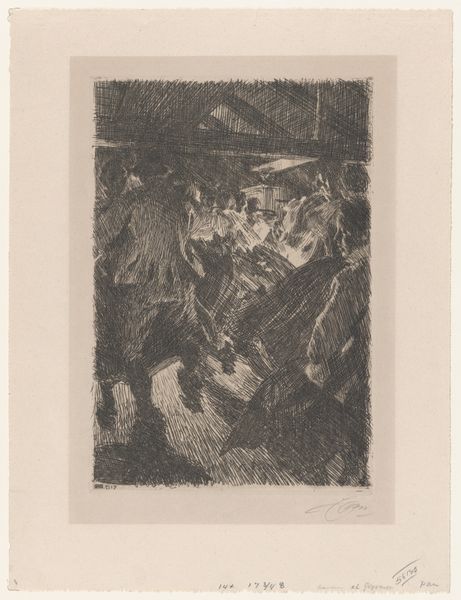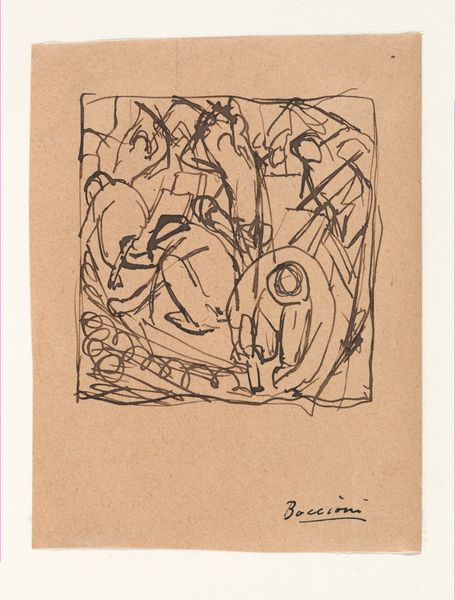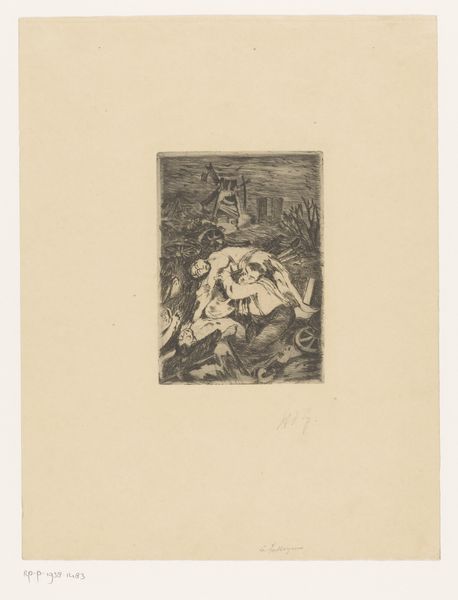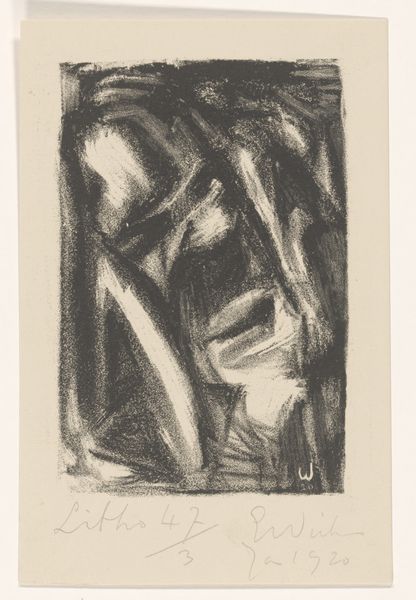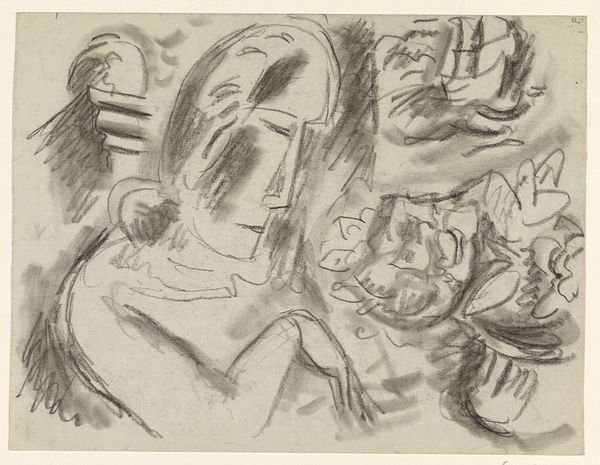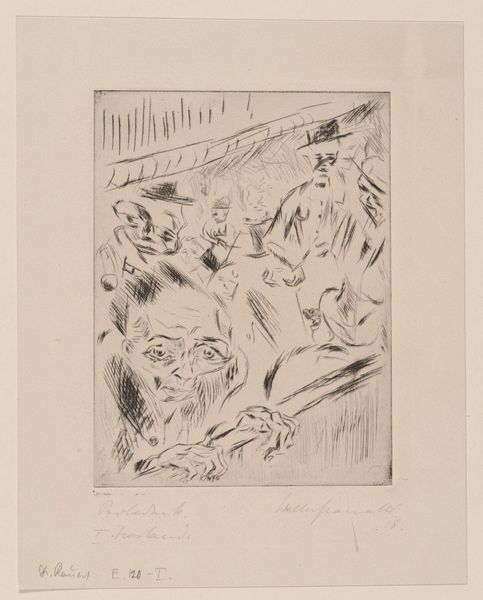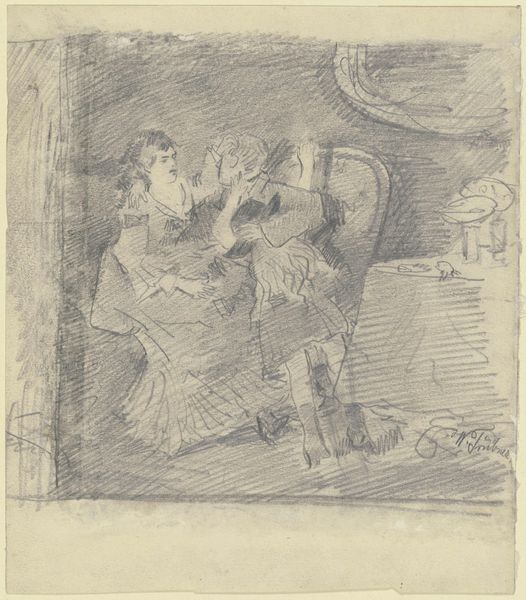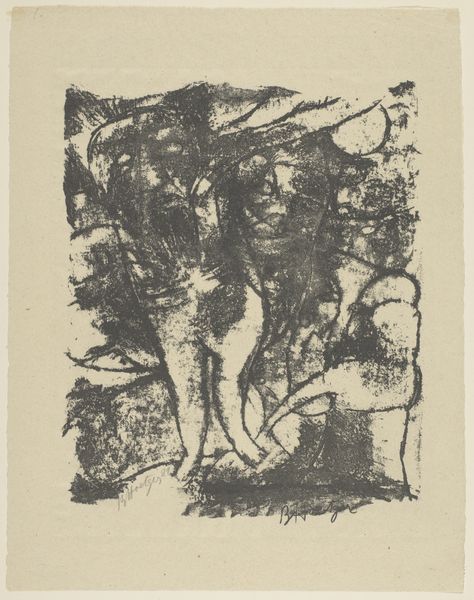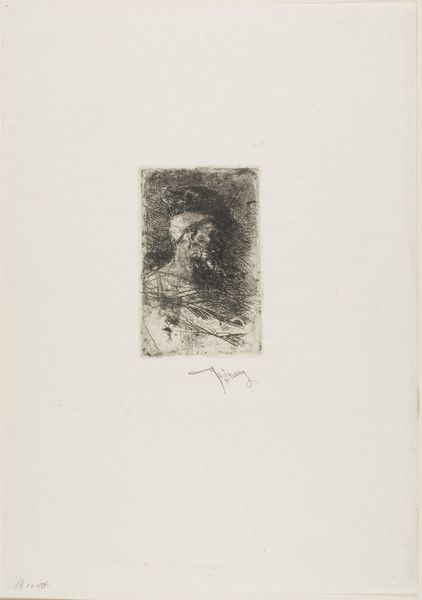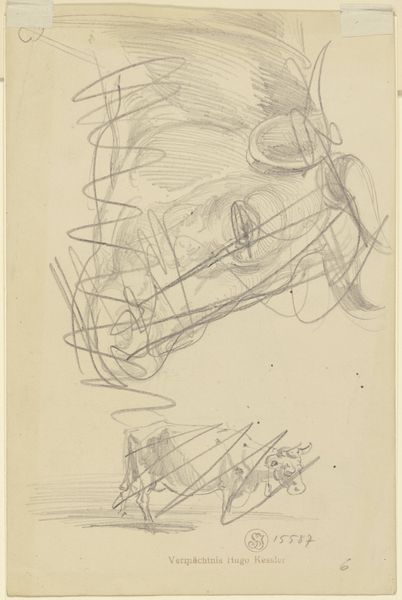
drawing, print, etching, pencil
#
drawing
#
light pencil work
#
narrative-art
# print
#
pen sketch
#
etching
#
pencil sketch
#
etching
#
german-expressionism
#
figuration
#
personal sketchbook
#
ink drawing experimentation
#
pen-ink sketch
#
pencil
#
sketchbook drawing
#
pencil work
#
history-painting
#
sketchbook art
Dimensions: height 493 mm, width 370 mm
Copyright: Rijks Museum: Open Domain
Editor: This etching from 1920-21, "Maarten Luther spijkert de 95 stellingen vast" by Lovis Corinth, presents a pivotal historical moment with palpable energy. I'm immediately struck by the chaotic composition and the rough texture of the print itself. What stands out to you when you examine this piece? Curator: What I find compelling is how Corinth employs the medium of etching to comment on the mass production of revolutionary ideas. Consider the labor involved: the physical act of etching the plate, a process allowing for the multiple dissemination of this image. This mimics, in a way, the printing press and the rapid spread of Luther’s theses. Do you see a connection there? Editor: Yes, I do. It’s interesting to consider the printmaking process as a form of, almost, industrialized thought. The ability to reproduce this image, and therefore Luther's act, gives it a completely different context. How does Corinth's choice of such a reproducible medium impact the reading of the artwork as a historical statement? Curator: Precisely. Etching democratizes the image, mirroring Luther's challenge to the Church’s authority. Furthermore, consider the materials themselves: the acid biting into the metal plate. This destructive act mirrors the disruptive force of the Reformation, materially representing intellectual upheaval. Are there aspects of the materiality of printmaking from that era you find of specific interest, say related to labor laws? Editor: That's a great point! The link between materials and production provides a new context to think about this work in. Thinking about the social impact of mass production makes me think more about access. Curator: Absolutely, the print becomes a tool, not just for visual representation, but for social transformation, and understanding its making deepens that understanding. Editor: I’m going to have to think more about the materiality and means of reproduction of this art! It brings so much more insight into the social background of this work, I really appreciate this perspective.
Comments
No comments
Be the first to comment and join the conversation on the ultimate creative platform.
